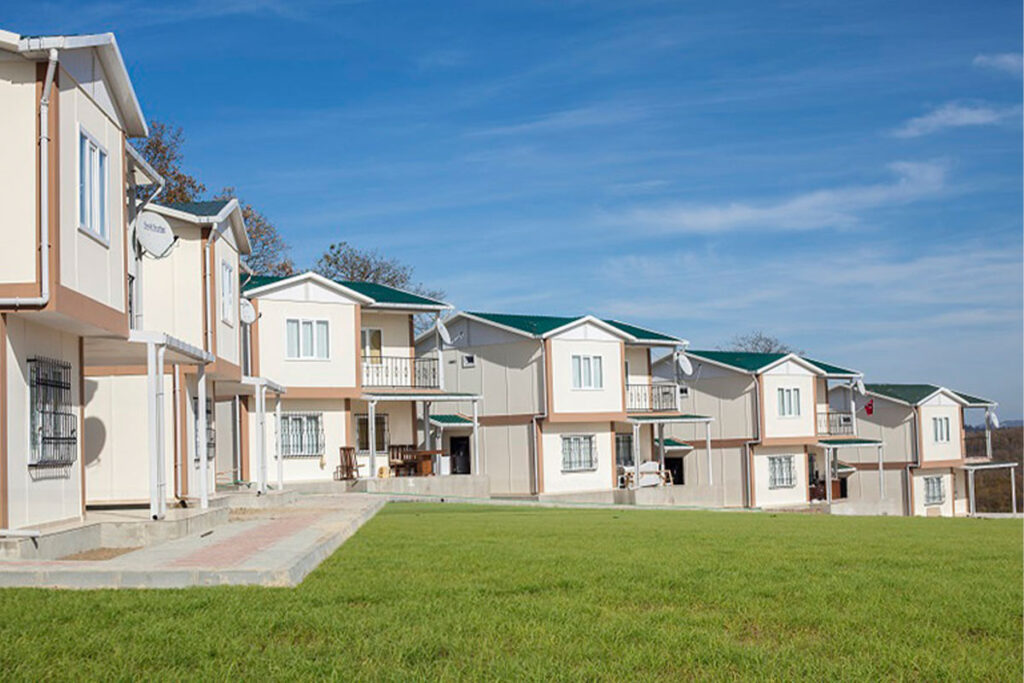
Off site construction trends and their impact on sustainability
The construction industry is increasingly turning to off site construction as a viable solution for improving efficiency and sustainability. This method involves assembling components of a building, or sometimes even entire structures, at a location different from the final site. Over recent years, there has been a noticeable surge in its popularity, particularly among home enthusiasts looking for eco-friendly and cost-effective solutions.
By relocating the building process away from conventional construction sites, off site construction brings forth advantages such as faster build times, reduced waste, and improved quality control. Furthermore, this approach aligns with the growing focus on sustainability, as it often results in a smaller carbon footprint through more efficient use of materials and transportation mechanisms.

A brief history of off site construction
The concept of assembling structures away from their final destination isn’t new. Modular construction, a subset of off site construction, has been around for over a century, dating back to tin and wooden homes that were transported to various locations around the globe. Over time, these methods evolved, leading to the integrated technology-driven processes we see today.
Benefits of off site construction in modern housing
Modern-day off site construction offers numerous benefits that appeal particularly to home enthusiasts. Some of these advantages include:
Improved quality and precision
By constructing building components in a controlled factory environment, the precision and quality of the finished product are often superior to traditional methods. Controlled environments minimize the risk of human error and exposure to environmental factors, ensuring consistent results.
Time savings
Unlike traditional construction sites, which can be hampered by weather-related delays, off site construction operates under a more predictable schedule. This method can significantly reduce project timelines, as on-site preparations can occur simultaneously with factory production.
Environmental impact
By significantly reducing waste and improving resource use, off site construction positively impacts the environment. This becomes especially crucial with the current push towards green building initiatives. The controlled setting allows for more efficient material use, thus minimizing waste.Read more about modular housing here.
Cost-effectiveness
Despite potentially higher upfront costs, the long-term savings often associated with off site construction make this an attractive option. Reduced timelines, decreased labor costs, and minimized waste contribute to overall budget savings.
Key considerations for home enthusiasts
While off site construction offers several benefits, home enthusiasts must consider various factors before deciding if this approach is suitable for their needs.
Design flexibility
While off site construction allows for customization to meet specific architectural goals, its standardized process may limit design flexibility in some cases. Ensuring your design preferences align with the capabilities of the construction method is crucial.
Site preparation
Effective execution of off site construction depends on adequate preparation of the site where the finished components will be assembled. This proper groundwork ensures that the transition from factory to job site is seamless, minimizing potential delays.
An optimistic future for off site construction
The future of the construction industry looks promising with the continued integration of off site construction methodologies. As technology advances and demand for sustainable practices rises, embracing these modernized techniques becomes even more critical. Incorporating off site construction methods allows home enthusiasts to benefit from significant social, environmental, and economic advantages, ensuring a more sustainable future for the construction industry.
Related readings
For more information on sustainable building practices, check out how to install an irrigation system or explore how to set up a greenhouse.

Faq Section
What is off site construction?
Off site construction is a process where components of a building are manufactured and assembled in a factory setting before being transported to the final site for completion.
Why is off site construction considered sustainable?
Off site construction improves resource efficiency and reduces waste, thus minimizing the environmental impact associated with traditional construction methods.
Are there limitations to off site construction?
While off site construction offers multiple advantages, it may pose certain limitations regarding design flexibility and site-specific considerations.
This article contains affiliate links. We may earn a commission at no extra cost to you.